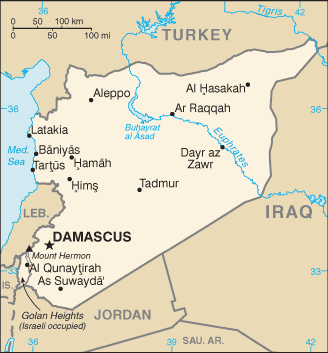While US officials have insisted from the start of the Syrian Civil War that they oppose the idea of federalization within Syria, and don’t want to see any autonomous regions emerge to threaten a strong central government, US policy has been driving the exact opposite goal, particularly as it relates to the Kurds.
 The Kurdish YPG have been the main recipients of US military support in Syria, and throughout the war have used this aid as part of an effort to carve out an ever-growing autonomous region. Initially resisting ISIS expansion into the Hasakeh Province, the YPG eventually decided to expel government forces as well.
The Kurdish YPG have been the main recipients of US military support in Syria, and throughout the war have used this aid as part of an effort to carve out an ever-growing autonomous region. Initially resisting ISIS expansion into the Hasakeh Province, the YPG eventually decided to expel government forces as well.
Now, the YPG and its political wing the PYD have declared the area “autonomous” and come up with an increasingly complicated set of rules for how the region is to interact with a hypothetical future Syrian government that recognizes its autonomy. More importantly though, they are growing.
Initially focused on chasing ISIS out of border regions, the YPG kept moving, chasing ISIS out of decidedly Arab territories which have been subsumed into their autonomous region as well, with the YPG leading the US-backed invasion of the ISIS capital of Raqqa, that territory could expand dramatically.
Where this leaves post-ISIS Syria is anyone’s guess, as is how the Kurdish autonomous government will handle a very large Arab minority (the Iraqi Kurdish government’s example is not a promising one). One thing is for certain, however, the existence of this region will dramatically undercut stated US goals for a “unified” Syria in the post war period, and would pose a headache for a US-backed regime in Damascus, assuming the US ever managed to install one.





Getting the Syrian war adventure back on track quickly. Trump will be with it soon to show the Russians how to make America great again, just like in the Iraq days!
luv from Canada.
The Kurds have proven that they are able to live in Peace with Arabs or Turkmen, Christians, Yazidi Kurds or anyone else. The author should google “Rojava” and get some Information. The US really should support the Kurds
Yes, I agree. Google all. And the information is clear. Many residents would almost like to stay under ISIS then to be “liberated” by Kurds. So far, Kurds have engaged in large scale ethnic cleansing everywhere they went to expand their territory. Their complicated constitution is a fiction — something very similar US has worked out with another carved out territory, Kosovo. Kurds need to remember that empires and their whims do not last forever, and that in the end, they are the ones that need to be on good terms with the population. Using their power now over others, will be remembered for a long time by the unfortunates that were expelled from Manbij and many other villages and towns. ISIS is actually helping Kurds, as in most places, ISIS acted as a place-holder, and usually cut a deal with Kurds to leave the place. It is also very, very curious, that ISIS has an up to date information on the positions of Turkish artillery around Al-Bab.
These are dirty games, and I am afraid will backfire on Kurds, as always. This is a perfect example why Kurds were so eternally divided, and eternally at odds with the local population. All is fine, until a foreign power offers some promises, and funds arming, paying soldiers salaries, and all the logistics. Then, attracted tike a moth to a flame, Kurds forget they neighbors, or their country. They will take up arms against them, just as if being different nationality or language, constitutes an entitlement to take up arms against their own country and their own fellow countrymen.
There is no need to read glossies. The grim reality on the ground is what tells the story. But it will be unrecognized, as the peace process guarantors also guarantee Syria’s sovereignty and territorial integrity. Kurds are asking for a war with Turkey — exploiting the tensions between Turkey and US. But it may turn out that Trump has ZERO taste for nation-building, and surely, Kurdish nation will not be built in the days that remain of Obama administration.
I agree with you on everything but the last sentence. The worst thing that can happen to an anarchist movement like Rojava is imperial sponsorship. The Kurds need to learn that only they can free themselves.
Oct 16, 2016 ‘Why do they bomb us?’ Children killed in recent rebel shelling in Aleppo
Rebels in the Syrian city of Aleppo shell government-controlled areas. RT’s correspondent Murad Gazdiev spoke with survivors as rescuers dug through rubble to recover the body of a 13-year-old girl.
https://youtu.be/zK9s7LKhnbU
The US isn’t trying to fuel Rojavan autonomy. Their trying to sabotage it by pushing the YPG to stretch themselves too thin and expand into area’s they can’t possibly maintain control over. It’s a trap.